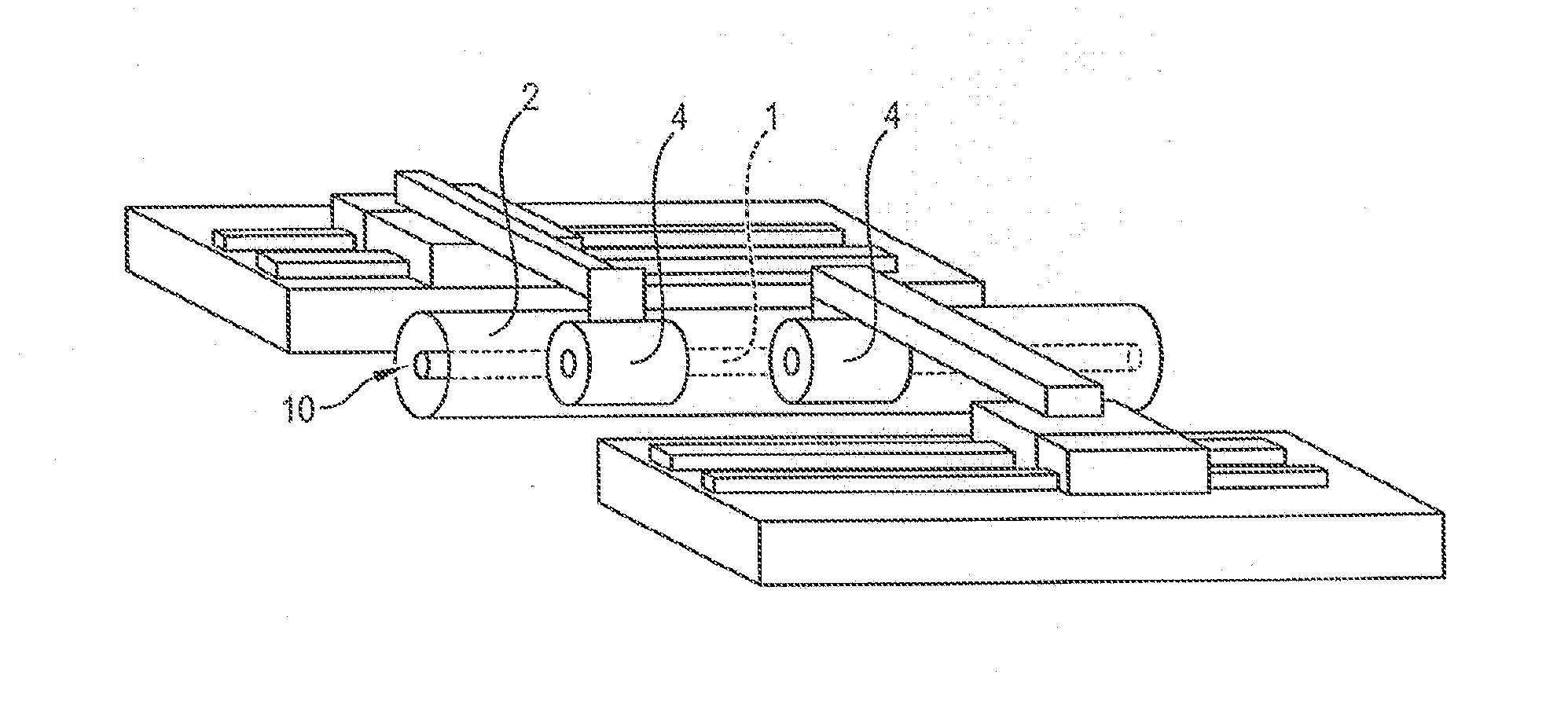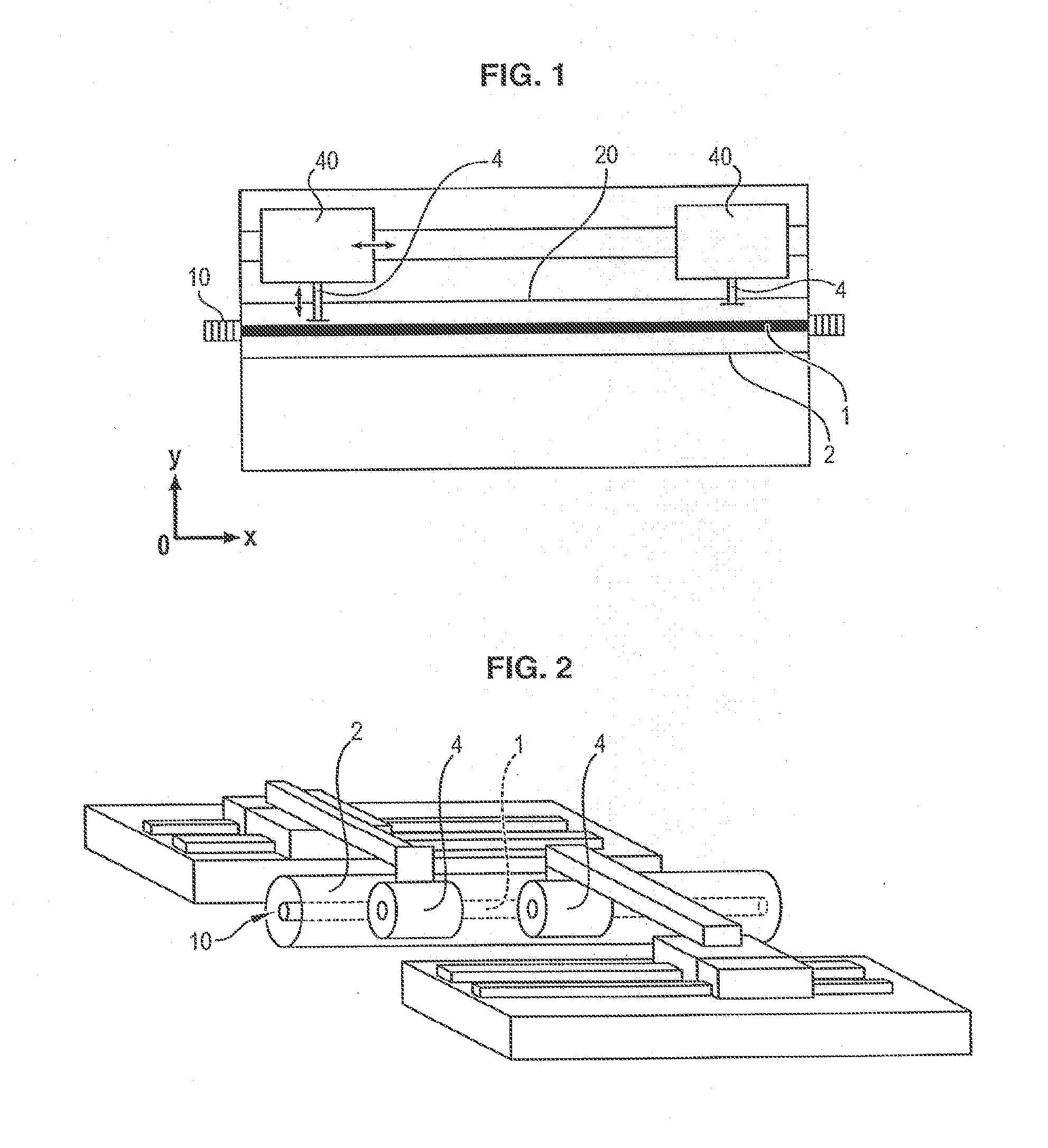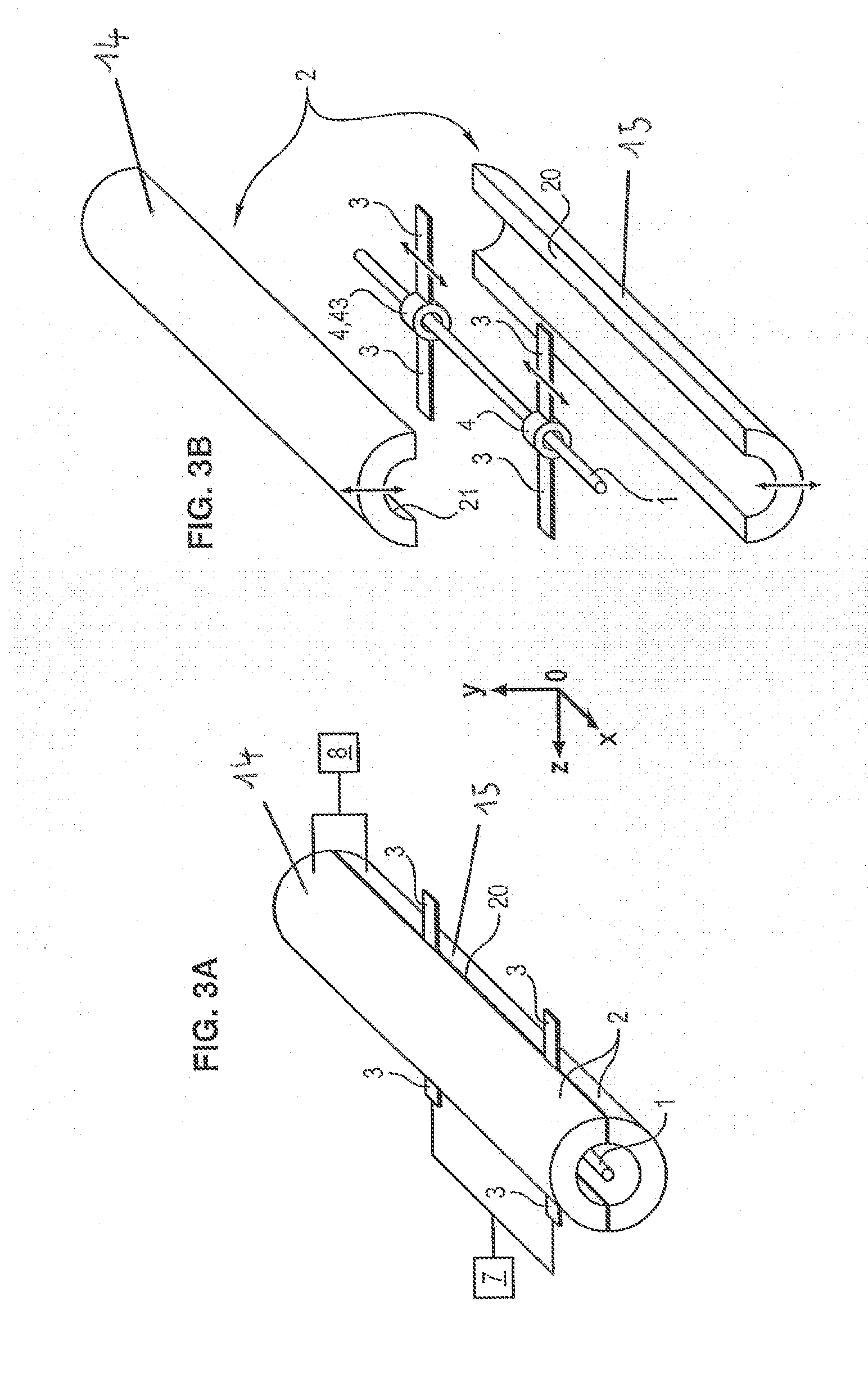Coaxial-impedance synthesizer
a technology of coaxial impedance and synthesizer, which is applied in the direction of impedence networks, waveguide devices, electrical devices, etc., can solve the problems of increasing the time required to synthesize, load leakage, and adversely affecting the speed of deck movement, so as to achieve a high reflection coefficient
- Summary
- Abstract
- Description
- Claims
- Application Information
AI Technical Summary
Benefits of technology
Problems solved by technology
Method used
Image
Examples
Embodiment Construction
[0077]FIGS. 3A and 3B diagrammatically show a possible embodiment of an impedance synthesizer according to the invention.
[0078]The impedance synthesizer mainly includes a central longitudinal 1 conductor extending along a longitudinal axis Ox and a conductive outer tube 2 coaxial with the conductor 1 (referred thereafter as outer tube).
[0079]The outer tube 2 comprises two separable half-tubes 14, 15.
[0080]In FIGS. 3-5, the tube is cylindrical. However, this is not mandatory and the tube may be square or rectangular. The same applies to the two half-tubes. In addition, the two half-tubes are not necessarily identical. Whatever the tube section is, it is hollow and longer than wide.
[0081]The half tubes define at least two positions: a position of away from each other, illustrated in a non-limiting manner in FIG. 3B, and a position of mutual closeness, illustrated in a non-limiting manner in FIG. 3A.
[0082]The two half-tubes are not necessarily completely separable pieces, and can may b...
PUM
 Login to View More
Login to View More Abstract
Description
Claims
Application Information
 Login to View More
Login to View More - R&D
- Intellectual Property
- Life Sciences
- Materials
- Tech Scout
- Unparalleled Data Quality
- Higher Quality Content
- 60% Fewer Hallucinations
Browse by: Latest US Patents, China's latest patents, Technical Efficacy Thesaurus, Application Domain, Technology Topic, Popular Technical Reports.
© 2025 PatSnap. All rights reserved.Legal|Privacy policy|Modern Slavery Act Transparency Statement|Sitemap|About US| Contact US: help@patsnap.com



